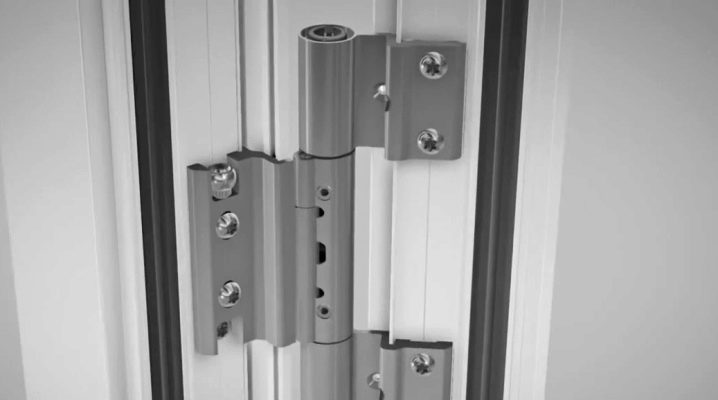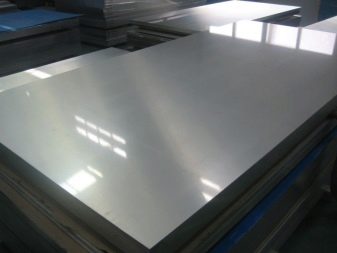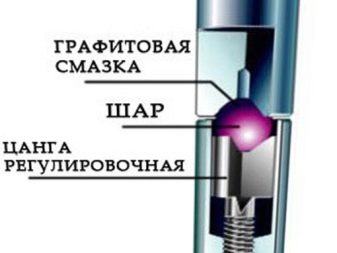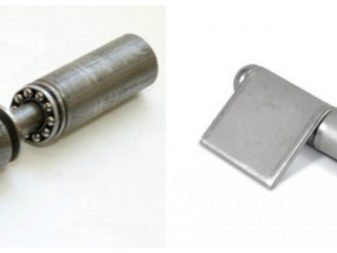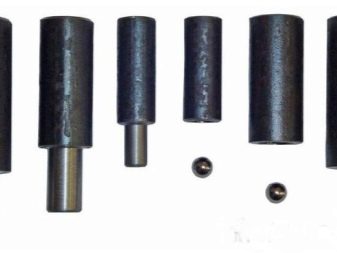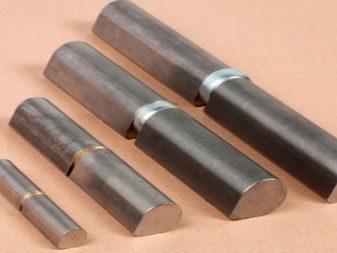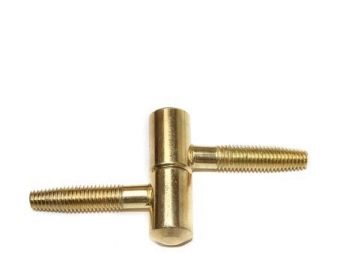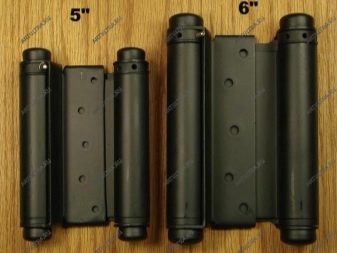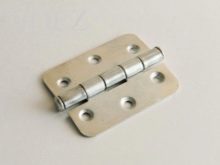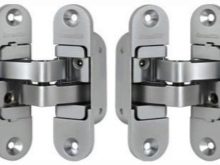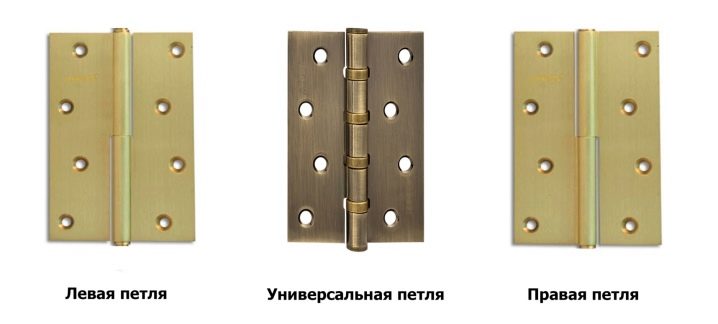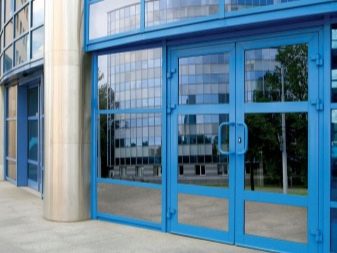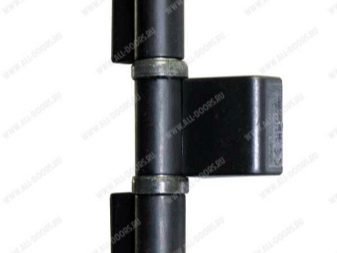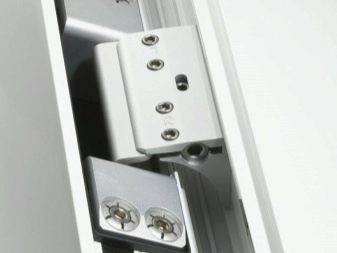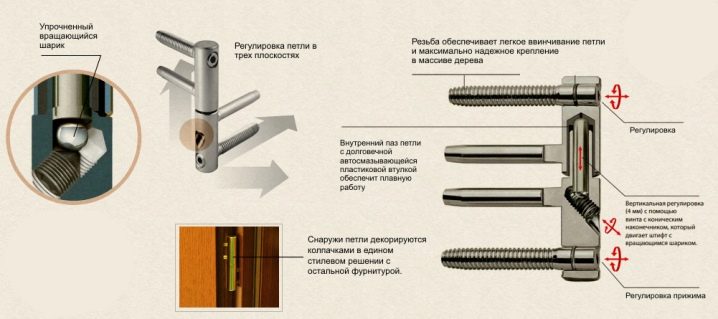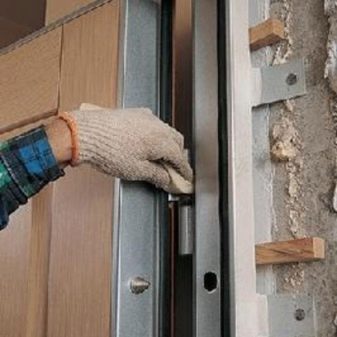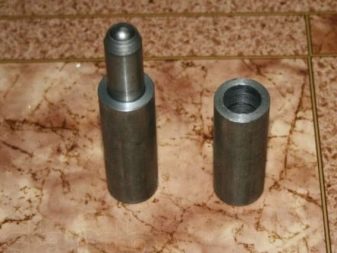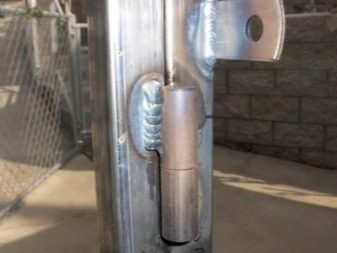Hinges for aluminum doors: types and recommendations for selection
Hinges for iron doors have their own characteristics. This is due to the considerable weight of the closing structures. The type of hinges, their quality and endurance depends on the durability of the functioning of the door.
Requirements
Hinges for metal doors are large. Various materials are used for their manufacture.
- Steel. It is characterized by reliability, moderate cost. However, this material is prone to corrosion.
- Stainless steel. Stainless steel is characterized by high strength properties, corrosion resistance.
- Brass. Products made of brass have excellent galvanic properties. Due to the processing by casting, it is possible to create a different kind of design.
- Aluminum. Loops of this material are characterized by aesthetics, low cost. However, due to the low strength properties and rapid wear such hinges are not used in heavy metal door designs.
Loopback elements should have the following characteristics:
- long service life;
- high quality;
- universality;
- reliability.
Types of hinges for aluminum doors, as well as their technical characteristics are governed by standard GOST 5088-2005. According to the established rules, elements have certain sizes, shape, purpose.
Species
Depending on the type of construction loops there are several types of models.
- Models with a ball inside. The ball located between the rods prevents rapid wear of the mechanism and ensures smooth movements.
- Bearing models. Ball bearing mechanism provides ease of movement, long service life. The presence of the bearing significantly slows the wear of the hinges, prevents the occurrence of a creaking sound, jamming, subsidence of the structure.
There are two types of ball bearing mechanism:
- elements in the form of a cylinder with a ball;
- drop-shaped loops (in shape resemble a drop).
Both those and other roller elements have high strength characteristics. They are able to withstand a considerable weight of a metal door.
Also distinguish the types of loops with different installation method.
- Screwed The hinges consist of two cylinders arranged one behind the other. The rods are attached to them. Their number can be different: from 2-4 rods. With their help, you can open the door in one direction only.
- Pendulum. With their help, you can open the door in both directions.
- Overhead. Elements are mounted on top of the box and door. Rarely used in residential buildings.
- Spring. These are loopback mechanisms in the form of two cylinders following one another. They have a spring inside the structure. The item allows you to return the door to the closed state without any help. Such 3-component mechanisms are rarely used in metal doors, as they have rather rapid wear.
- Internal. The shape of the loops is in the form of a flat rectangle or cylinder. The mechanism in the form of a rectangle is fastened with pins. The loopback mechanism is unique in that when the door is closed, it is completely invisible.Even with a strong desire for such loops will not be able to cut outside, so they are most often used for increased security from penetration into the room. If the door is located on the street side, then you can not worry about the negative impact of the external environment - the hinges are reliably protected from corrosion and jamming. This may occur due to sudden changes in temperature.
- Hinged. The design is in the form of a rectangle, the edge of which is a cylinder with a hole. This mechanism has a relatively low cost.
Mechanisms for fastening door designs vary along the mounting side.
- Right. With this arrangement, the door structure will move counterclockwise.
- Left sided. In this case, the door structure will move clockwise.
- Mixed. Fixed mechanisms suitable for any direction of opening the door.
Tips for choosing
Properly selected door hinges will contribute to a long service life of the entire door structure, as well as provide the best functionality of the mechanism.
Before you buy a door, it is important to think in advance about its weight, the option of opening and what the load will be. It is also necessary to calculate the possibility of shrinkage of the walls, the influence of weather conditions, ensuring the safety of the room. Given this, it will be better to choose the type of hinges for attachment to the box. Ideally, the door mechanism will consist of elements combined in color and design.
If the door is already there, then it remains to choose the loopback elements. Here it is necessary to select the most suitable canopy option, taking into account the necessary requirements.
For example, if the door has a considerable weight, then it is better to choose the loop elements of a cylindrical shape with the greatest number of pins. For this fit ball bearing mechanisms with the best strength properties. If the door has a small weight, then fit options with a flat shape.
It is also possible to solve problems with large weight when installing several mounted elements (more than two). This is especially true if the door will often be used, since at elevated loads the mechanism wears out quickly.
In the event that the door goes out, then for reliability it is more expedient to choose the internal type of canopy.
Such elements are characterized by versatility, aesthetics, long service life. However, it should be borne in mind that this type of fastener has low strength properties: cases of sagging are possible during operation. Due to the complexity of installation, repair of such mechanisms is difficult.
It should also be remembered that the internal canopies have a certain angle of plowing the door - this can create considerable difficulties when entering into the room large items.
If the house is new and it is assumed that the walls will shrink, then perhaps the best option would be mounted elements with adjustable features.
When determining which way the door mechanism will open, you should select the appropriate type of hinge.
The brand of the manufacturer plays an important role - the quality of products, strength properties and wear resistance often depend on it.
Installation and adjustment
The method of installation of door hinges depends on their type.
In order to install the door on the screw hinges, it is necessary to cut the upper part of the hinges into the door, and the lower part into the opening.
The loopback mechanism is easy to adjust both horizontally and vertically. The ability to adjust allows you to adjust the shrinkage of the walls. Any misalignment of the doorway can be smoothed out by twisting the hinges in the right direction.
Depending on the type of hinge, the height of the door can be adjusted without dismantling or by displacing the elements. When carrying out work, one should take into account the reliability of mounting canopies, the ratio of their positions. Just making sure that everything is proportional, you can start welding.
In contrast to the screw loops, internal canopies cannot be adjusted.
Hinged hinges are attached to the door structure and to the box using the hole in the cylinder. When removing the door such hinges need dismantling.
In the case of a ball-bearing mechanism, the elements in the form of a cylinder are welded to the plates - this provides the necessary gap between the door structure and fasteners.
In the case of a drop-shaped type of fastener, welding is not required, since the shape of the element technologically provides the necessary gap between the door structure and the fastener.
When installing a ball bearing mechanism with your own hands, you should consider some points.
- The door structure is fixed to the door frame in such a way that all its edges are in close contact with the surface. Door spacing must be the same on all sides. It is important to avoid distortions.
- Before operation, the hinges are machined with grease, otherwise the ball may weld to the loop when welding.
- When installing hinges, it is important to provide a functional gap between the door and the fastener - only then proceed to welding.
- After welding works, welding of welds is performed. This is done with an aesthetic purpose.
- The final stage of the work is surface treatment with a coloring agent. This is done in order to protect the material from corrosion.
The installation process of the internal fastener is quite specific. It includes the following works:
- holes for fasteners are cut through - they must be perfectly level;
- first, the hinges are welded to the inside surface of the loot, and then to the inside surface of the door structure.
The process is rather laborious and requires great accuracy and accuracy. Neglecting the nuances of the installation can lead to a rapid loss of functionality of the mechanism, breakage.It will be difficult for an amateur to cope with such work, therefore it is better to entrust it to professionals.
To extend the life of the mechanism it is necessary to lubricate it periodically, to adjust the position.
See the following video for door hinge differences.
